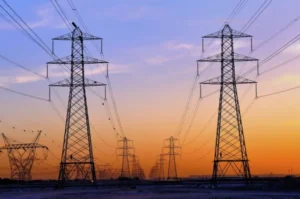
Imagine premises had a set of pipes supplying a house or business with all of its water needs. Water pipes spread throughout offices, kitchens, bathrooms, and outdoor spaces. Now, suppose one day it is noticed that some of the pipes have sprung a leak – the majority of the water is still reaching its final destination; however, a percentage of that resource automatically gets wasted through leakage. Naturally, one would call for maintenance to fix it instantly because it goes against common reason to knowingly waste a necessary resource such as water. We would not disregard the pipes that supply water and permit that resource to drain away, costing us financially and physically. Therefore, why do we waste electricity and accept it as something that happens?
The simple answer is that most people are not aware that the systems and electrical components we use multiple times daily result in energy losses of up to 30%. These days, public and private infrastructure have unprecedented demands for electricity and connectivity. From industrial machinery, lighting and air conditioning to domestic appliances and charging cables for tablets, computers and phones. Contextually, more than half of the devices in our homes and businesses are DC (direct current) powered with a primary energy source supplied by an AC (alternating current) that requires DC conversion.
We use AC (alternating current) because AC can travel further than a DC, which can not change direction due to the alternating current. While simply charging a phone, laptop, or smartwatch, the device is leaking between 10% and 30% in energy through the conversion (AC-DC), which is wasteful, costly, and hugely taxing on the environment. The leaking energy is especially concerning considering that the average home has more than 11 smart connected DC powered devices paired with older AC designs and more than 20 in houses run by younger demographics.
It is easy to look at oneself and say, “I am only running a small personal laptop,” or “my business is environmentally conscious in other ways,” but consider companies the size of Apple, Amazon, Google, and of course businesses throughout the private sector. Consider the number of laptops they run and the LED lights they need. Each adaptor plug – is used to keep these.
Moreover, necessities running virtually all of the time – are generating heat, losing vast amounts of energy and taking us further and further away from our Climate Change goals. Furthermore, global warming is at unprecedented heights; however, restricting the rise to 1.5° Celsius by 2025 is a ‘now or never” scenario. With this in mind, if Irish businesses took a good, hard look at their energy consumption models and changed their AC to DC systems, they could realistically aim for 30-40 % savings in energy. The knock-on effect for other businesses who followed suit and the environment could be game-changing. As well as facing a very concerning climate crisis, we are also amid a cost of living crisis. With this in mind, the price of everything has increased, including food, petrol and energy. As a result, there was a very upsetting case in the British news recently, where a 77-year-old woman was riding the bus all day, every day, using her free pass because the bus was warm and she could not afford to heat her own home. People are coercively choosing between heating their homes or putting food on the table, and the truth of the matter is we have the means to solve this problem, but because it is ‘invisible’ to the naked eye, it goes ignored undetected. We would certainly not be so complacent if we could physically see the energy leaking out of our devices and appliances. As a society, we are paying exorbitant prices for inefficient and unsustainable energy. We are pouring valuable energy down the drain by using outdated electrical networks, and most companies do not contribute to sourcing alternatives that would see a reduction in energy loss. Ironically, there is a sustainability paradox as wind, and solar-powered energy sources are constructed to provide a clean energy source, yet, that energy is still being delivered over leaky networks. For example, it would be like driving a car with the most advanced electric motor and battery but with the worst possible aerodynamics.
So what is the solution? Dual Distributed Networks (DDN) is a patented technology that addresses the AC-DC conversion problem and buttresses the well-known four Ds in energy (Decarbonisation, Digitisation, Decentralisation, and democratisation). Unlike the current models, the DDN enables sustainable 5G, small cell and smart city deployments across a single cable. Rather than the standard two, one wire means less copper, less plastic, and a reduction in the cost of labour, roadwork, and deployment. This system offers a Renewable First Strategy that allows TELCO property owners and developers to adopt a centralised battery distribution system and then only revert to the grid as a back–up and; this is turning energy delivery and current consumption models on their heads. In addition to this, a study with one of Ireland’s largest construction companies, Keltech IoT, has identified the ability to remove up to 80% of traditional high voltage AC cabling from new and retrofit buildings.
Moreover, that is where we stand. The technology is there to rectify a problem that is costing us mentally, physically and financially and one that will continue to harm the planet if it goes ignored. As one would not ignore a leaky pipe spewing water all over our homes and belongings, why would one turn a blind eye to a leaky cable allowing energy to escape and costing us personally and the planet?